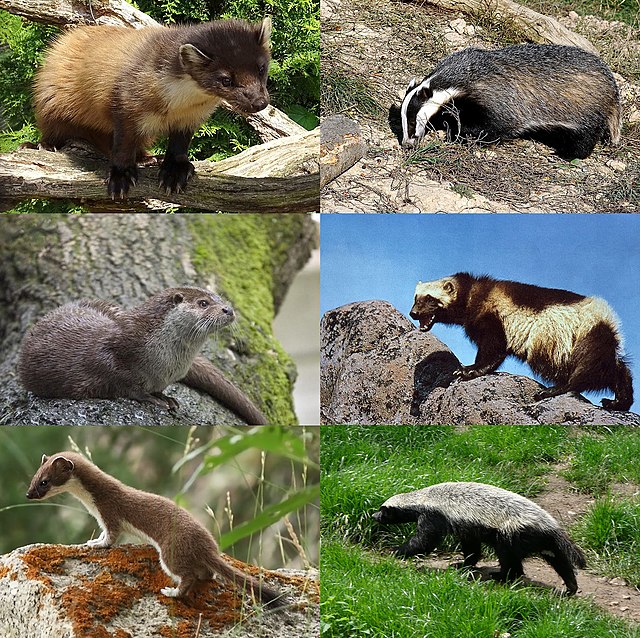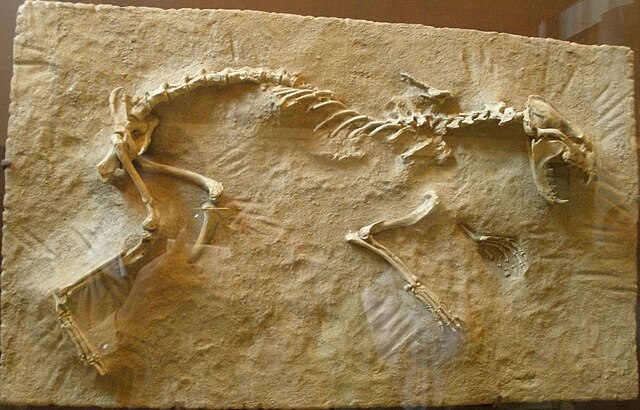The giant otter or giant river otter is a South American carnivorous mammal. It is the longest member of the weasel family, Mustelidae, a globally successful group of predators, reaching up to 1.8 m. Atypical of mustelids, the giant otter is a social species, with family groups typically supporting three to eight members. The groups are centered on a dominant breeding pair and are extremely cohesive and cooperative. Although generally peaceful, the species is territorial, and aggression has been observed between groups. The giant otter is diurnal, being active exclusively during daylight hours. It is the noisiest otter species, and distinct vocalizations have been documented that indicate alarm, aggression, and reassurance.
Giant otter
Giant otter head from the Museu Paraense Emílio Goeldi research institute
A wild giant otter "periscoping" in Cantão State Park in Brazil, showing its identifying throat marks
Skull seen from the side. Short-snouted as usual in mustelids, it has a pronounced sagittal crest, allowing for a very powerful bite in this species.
The Mustelidae are a diverse family of carnivorous mammals, including weasels, stoats, badgers, otters, martens, grisons, and wolverines. Otherwise known as mustelids, they form the largest family in the suborder Caniformia of the order Carnivora with about 66 to 70 species in nine subfamilies.
Mustelidae
Sthenictis sp. (American Museum of Natural History)
Skeleton of a black-footed ferret (Mustela nigripes) on display at the Museum of Osteology
Stoat killing a rabbit








